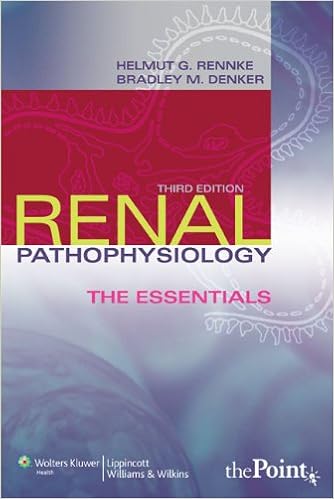
Renal Pathophysiology: The Essentials (Renal Patholophysiology: The Essentials) Download Free (EPUB, PDF)

This text offers medical students a case-based approach to learning mechanisms of renal disease. Each chapter covers a disease and begins with a patient case, followed by discussion of the pathophysiology of the disease. Issues of differential diagnosis and therapy are linked to pathophysiologic mechanisms. Short questions interspersed in the text require students to apply their knowledge, and detailed answers to the questions are given. This edition includes a full-color insert and an appendix of normal lab values.

Series: Renal Patholophysiology: The Essentials
Paperback: 378 pages
Publisher: LWW; Third edition (August 18, 2009)
Language: English
ISBN-10: 0781799953
ISBN-13: 978-0781799959
Product Dimensions: 8.9 x 5.9 x 0.6 inches
Shipping Weight: 1 pounds
Average Customer Review: 4.3 out of 5 stars See all reviews (10 customer reviews)
Best Sellers Rank: #538,486 in Books (See Top 100 in Books) #45 in Books > Textbooks > Medicine & Health Sciences > Medicine > Clinical > Nephrology #76 in Books > Medical Books > Medicine > Internal Medicine > Nephrology #145 in Books > Textbooks > Medicine & Health Sciences > Medicine > Basic Sciences > Pathophysiology

I'm a little surprised at the rave reviews and I wonder if they were written before the book was read in detail--to be clear, I thought this book was excellent as I was first reading it, as well. I thought Lily's Pathophysiology of Heart Disease was excellent, and I thought this book would be similar in that it would provide detailed explanations with clues about mechanisms. Although I think this book attempts to explain mechanisms, at least for someone with a cursory knowledge of renal pathophysiology, I found them confusing and inconsistent with what I've read elsewhere.For example, one of the other reviewers states that this book attempts to differentiate the clinical manifestations of nephrotic versus nephritic syndrome on the basis of sub-epithelial versus sub-endothelial deposits. The authors claim that one of the reasons why diseases that cause sub-epithelial deposits manifest as nephrotic syndrome is because circulating inflammatory cells are not able to access the sub-epithelial space and thus there is no inflammation. Similarly, the book posits that diseases with sub-endothelial deposits tend to manifest as nephritic, because the circulating inflammatory cells are able to access the deposited antigen/antibody/complement.But this does not really explain why post-streptococcal glomerulonephritis, which is classified in First Aid, Robbins, and Goljan as primarily nephritic, has sub-epithelial deposits (in which case, according to this theory, you would expect a primarily nephrotic presentation). In addition, it does not explain why membranoproliferative glomerulonephritis, which has sub-endothelial deposits, tends to present as a nephrotic syndrome.
Renal Pathophysiology: The Essentials (Renal Patholophysiology: The Essentials) Pathophysiology of Renal Disease Pathophysiology of Heart Disease: A Collaborative Project of Medical Students and Faculty (PATHOPHYSIOLOGY OF HEART DISEASE (LILLY)) Pathophysiology Online for Pathophysiology (Access Code and Textbook Package): The Biologic Basis for Disease in Adults and Children, 7e Study Guide for Essentials of Pathophysiology: Concepts of Altered States The Renal Patient's Guide to Good Eating: A Cookbook for Patients by a Patient Renal Physiology: Mosby Physiology Monograph Series (with Student Consult Online Access), 5e (Mosby's Physiology Monograph) Continuous Renal Replacement Therapy (Pittsburgh Critical Care Medicine) Pocket Tutor Renal Medicine Patho Phlash!: Pathophysiology Flash Cards Pathophysiology of Heart Disease: A Collaborative Project of Medical Students and Faculty Pathophysiology Made Incredibly Easy! (Incredibly Easy! Series®) Gould's Pathophysiology for the Health Professions, 5e Pathophysiology: A Clinical Approach Study Guide to Accompany Pathophysiology: A Clinical Approach Pulmonary Physiology and Pathophysiology: An Integrated, Case-Based Approach (Point (Lippincott Williams & Wilkins)) Nutrition Therapy and Pathophysiology (Available Titles Diet Analysis Plus) Nutrition Therapy and Pathophysiology Understanding Pathophysiology, 6e Porth's Pathophysiology: Concepts of Altered Health States(Ninth Edition)



